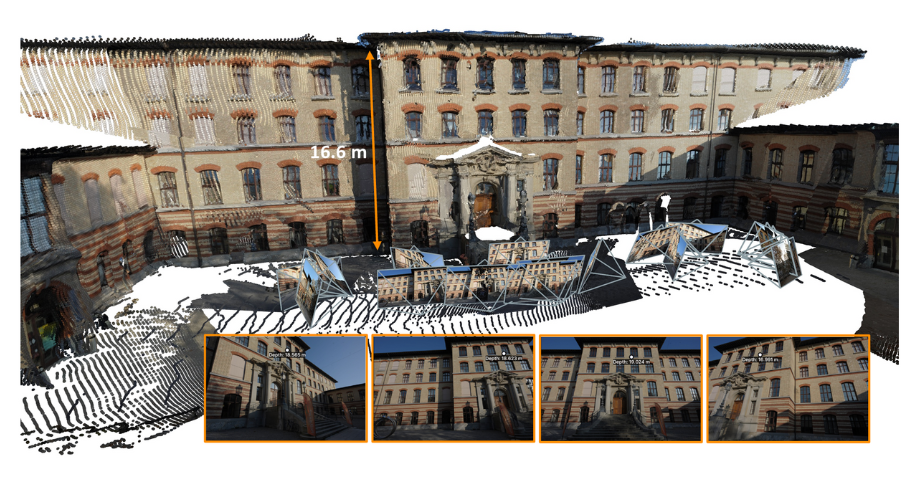Science
Carnegie Mellon and Meta Develop Groundbreaking 3D Mapping Model

Researchers from Carnegie Mellon University’s Robotics Institute and Meta Reality Labs have developed a new model that enables robots to create detailed 3D maps from various data sources. Named MapAnything, this innovative technology enhances the ability of robots to navigate complex environments with greater accuracy and efficiency.
Advancing Robotic Spatial Reasoning
The MapAnything model represents a significant leap forward in robotic perception, allowing machines to interpret camera data and depth scans as coherent 3D structures. This development is crucial for improving how robots understand their surroundings, particularly in cluttered or dynamic settings.
According to Nikhil Keetha, a Ph.D. student at the Robotics Institute and co-lead researcher on the project, “When humans interact with the world, we constantly estimate distances—how far away something is, whether we will run into it, or how far we need to reach out to grasp it.” He further explained that traditional 2D images limit robots’ abilities to perform similar spatial reasoning. The introduction of MapAnything marks a foundational step toward equipping machines with a more humanlike comprehension of their environments.
Large-Scale Data Sets Enhance Precision
To train the MapAnything model, the research team compiled an extensive dataset, encompassing over 200,000 real-world scenes. This dataset includes a variety of environments, such as classrooms, offices, outdoor paths, and forests. The model’s flexibility was evident during testing, demonstrating high performance across different scenarios.
Keetha noted, “We wanted to enable 3D metric scene geometry in a very flexible way. Current systems are either slow or only support a particular task. With MapAnything, we can handle any number of images or data types and build accurate 3D maps in one step.” This capability means that the model can reconstruct anything from a small water bottle on a desk to an entire office layout seamlessly.
The implications of this technology extend beyond robotics. Applications could include enhanced augmented reality experiences and improved environmental mapping, providing valuable tools for various industries.
For further information on MapAnything, interested parties can visit the project website. Media inquiries can be directed to Aaron Aupperlee at 412-268-9068 or via email at [email protected].
-

 Lifestyle5 months ago
Lifestyle5 months agoLibraries Challenge Rising E-Book Costs Amid Growing Demand
-

 Sports4 months ago
Sports4 months agoTyreek Hill Responds to Tua Tagovailoa’s Comments on Team Dynamics
-

 Sports4 months ago
Sports4 months agoLiverpool Secures Agreement to Sign Young Striker Will Wright
-

 Lifestyle4 months ago
Lifestyle4 months agoSave Your Split Tomatoes: Expert Tips for Gardeners
-

 Lifestyle4 months ago
Lifestyle4 months agoPrincess Beatrice’s Daughter Athena Joins Siblings at London Parade
-

 Science4 months ago
Science4 months agoSan Francisco Hosts Unique Contest to Identify “Performative Males”
-

 World4 months ago
World4 months agoWinter Storms Lash New South Wales with Snow, Flood Risks
-

 Science5 months ago
Science5 months agoTrump Administration Moves to Repeal Key Climate Regulation
-

 Business5 months ago
Business5 months agoSoFi Technologies Shares Slip 2% Following Insider Stock Sale
-

 Science5 months ago
Science5 months agoNew Tool Reveals Link Between Horse Coat Condition and Parasites
-

 Sports5 months ago
Sports5 months agoElon Musk Sculpture Travels From Utah to Yosemite National Park
-

 Science5 months ago
Science5 months agoNew Study Confirms Humans Transported Stonehenge Bluestones









